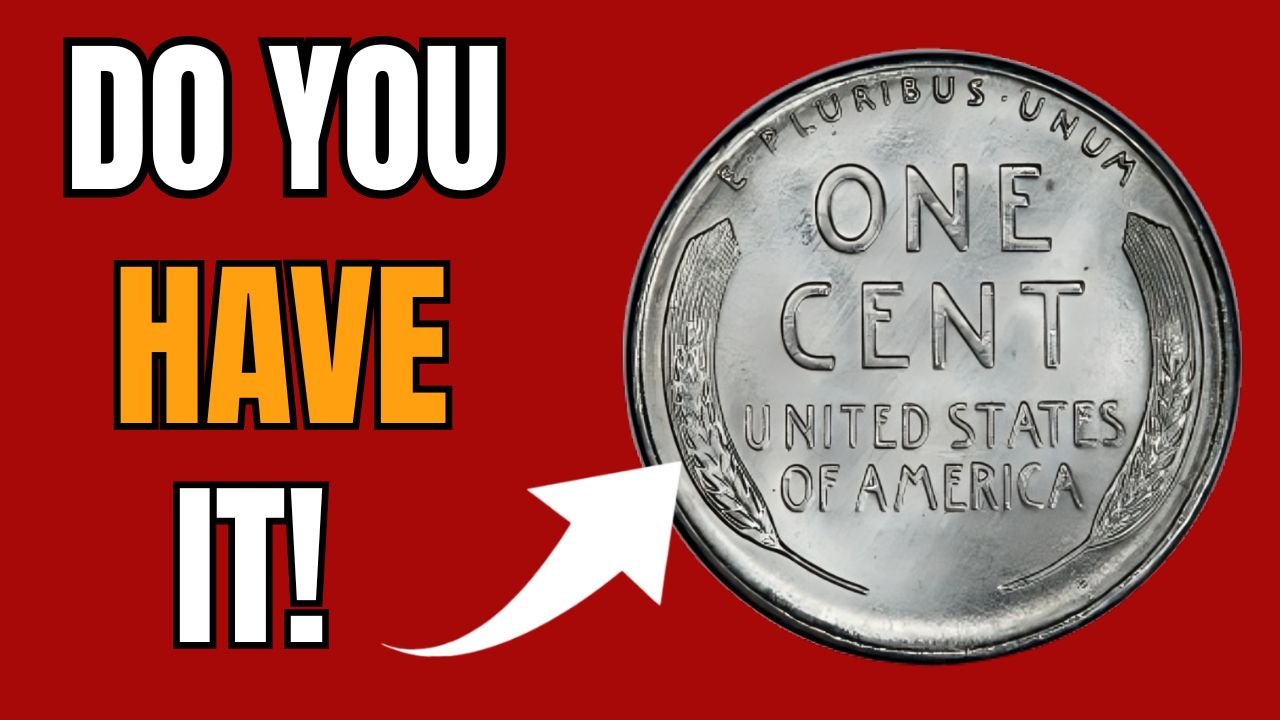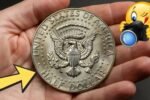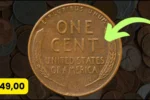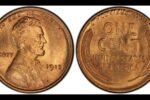The Lincoln Wheat Penny Valued at $159 Million, Still in Circulation: In the captivating world of numismatics, few coins command the awe and fascination that the Lincoln Wheat Penny does. Spanning a production era from 1909 to 1958, these pennies served not only as a means of transaction but as a tribute to one of America’s most revered presidents—Abraham Lincoln. Among the billions of Lincoln Wheat Pennies struck, one particular coin has emerged as the crown jewel of American coin collecting, with an eye-watering estimated value of $159 million. This almost mythical coin isn’t just a collector’s fantasy; it’s a historical artifact potentially still hiding in a forgotten drawer or an old coffee can of loose change.
This article explores what makes the Lincoln Wheat Penny so revered, the story behind this multimillion-dollar specimen, how to identify valuable variations, and why collectors across the world are still scouring their change for what could be the find of a lifetime.
The Origins of the Lincoln Wheat Penny: A Tribute to a President
The Lincoln Wheat Penny made its first appearance in 1909, a year that marked the centennial of Abraham Lincoln’s birth. Before this, U.S. coinage featured symbolic imagery such as Lady Liberty, rather than real historical figures. The decision to place Lincoln’s profile on a coin was groundbreaking and ushered in a new era for American currency. Victor David Brenner, a sculptor and engraver of notable skill, was chosen to design the penny. His depiction of Lincoln was so dignified and enduring that it has remained, in modified form, on U.S. cents to this day.
The reverse side of the Lincoln Wheat Penny was equally meaningful. It showcased two wheat stalks that symbolized America’s agricultural roots and its hardworking spirit. The elegant simplicity of the design resonated with the American public and made the penny an instant classic.
The $159 Million Lincoln Wheat Penny: Why It’s So Valuable
While most Lincoln Wheat Pennies are worth only a few cents to a few dollars depending on condition and year, the legendary $159 million penny is in a league of its own. But what exactly makes this coin so staggeringly valuable?
1. Extremely Rare Minting Error
At the core of this penny’s value lies a highly unusual minting anomaly. It was allegedly struck on a bronze planchet rather than the typical copper-zinc alloy used for pennies during its production era. This kind of planchet error is beyond rare and is believed to exist in only one known specimen.
2. Uncirculated, Pristine Condition
The $159 million Lincoln Wheat Penny reportedly remains in perfect uncirculated condition. That means no scratches, no wear, and no handling damage. A coin in such impeccable shape from over a century ago is virtually unheard of and dramatically increases its value.
3. One-of-a-Kind Provenance
Speculation among numismatists suggests that this coin may have originated from a secret mint experiment or an accidental strike that evaded the usual quality control systems. The lack of definitive historical records surrounding its origin only amplifies the mystique and allure for collectors.
A Mystery Wrapped in Copper: The Unknown History
Much of the fascination with the $159 million Lincoln Wheat Penny comes from the enigma surrounding its origin. Was it a clandestine trial strike by a curious mint worker? A testing planchet that was never meant to be used? Or merely an accidental fluke that slipped past inspectors? Theories abound, but no definitive explanation has been confirmed. Its undocumented nature fuels the intrigue and has turned this penny into the stuff of legend within the numismatic community.
Could You Own a Fortune Without Knowing?
One of the most exhilarating aspects of this story is the real possibility that such a penny could still be floating around in someone’s pocket change or hidden away in a forgotten coin jar. Because it looks so similar to regular Lincoln Wheat Pennies, it could easily go unnoticed. This very notion has driven both experienced collectors and everyday folks to scrutinize their pennies with renewed hope. Every day, people stumble upon hidden treasures tucked away in old piggy banks, estate sales, or passed-down collections. It’s not beyond the realm of possibility that another ultra-rare Lincoln Wheat Penny is waiting to be found by someone who takes a moment to look a little closer.
Other Lincoln Wheat Pennies Worth Searching For
While the $159 million penny is undoubtedly the most valuable, it’s not the only Lincoln Wheat Penny worth a second look. Here are several others that could fetch impressive sums:
-
1909-S VDB Lincoln Wheat Penny: With the “S” denoting the San Francisco mint and the initials VDB for Victor David Brenner, this penny is highly sought after and can bring in up to $100,000 in top condition.
-
1943 Copper Penny: During World War II, most pennies were made from steel to conserve copper. A few were mistakenly struck on copper planchets, making them exceedingly rare. These have sold for over $1 million at auction.
-
1955 Double Die Penny: This coin exhibits a noticeable double image, particularly on the date and lettering. It’s a favorite among collectors and can command thousands, even in circulated condition.
Tips to Identify Valuable Lincoln Wheat Pennies
If you’ve been inspired to inspect your coin stash, here are some characteristics to keep an eye on:
-
Check the Year and Mint Mark: Certain years—such as 1909, 1914, 1943, and 1955—are more valuable. Also, mint marks like “S” for San Francisco and “D” for Denver can impact value.
-
Look for Minting Errors: Double dies, off-center strikes, repunched mint marks, and wrong planchets are among the rare errors that can significantly increase a penny’s worth.
-
Condition is King: Coins in uncirculated or near-mint condition are worth exponentially more. Even a common year can be valuable if it’s in pristine shape.
Get Professional Authentication
Anyone who thinks they may have found a rare Lincoln Wheat Penny should resist the urge to clean or alter it in any way. Instead, have it examined by a certified grading service like PCGS (Professional Coin Grading Service) or NGC (Numismatic Guaranty Corporation). These organizations provide authentication and grading that determine a coin’s true market value.
Authentication protects both the buyer and seller and ensures you’re getting a fair price, especially when dealing with coins that might be worth thousands—or even millions.
More Than Just Money: A Historical Legacy
The Lincoln Wheat Penny isn’t just about dollar signs and rare finds. These coins offer a window into American history, capturing the spirit of a nation during some of its most defining decades. From the world wars to the Great Depression, each Lincoln Wheat Penny has passed through countless hands and carried the weight of daily American life.
To collectors, each penny tells a story—not just of financial worth, but of resilience, legacy, and American pride. Even common Wheat Pennies have emotional and historical value, making them cherished items in any collection.
FAQs About the $159 Million Lincoln Wheat Penny
Q1: Is the Lincoln Wheat Penny still in circulation?
Yes, though not in large numbers. Some Wheat Pennies are still found in circulation, and certain rare ones, such as the 1943 Copper Penny, can be worth extraordinary amounts—even up to $840,000 or more.
Q2: Why is the 1944 Lincoln Wheat Penny considered valuable?
The 1944 version is prized due to its rarity and the fact that no more are being produced. As time passes, the remaining examples become scarcer, especially those in good condition.
Q3: What is a typical 1944 Lincoln Penny worth?
In average circulated condition, it might sell for about 50¢ to $1. However, pristine mint state examples (MS65RD or higher) can be worth anywhere from $12.50 to over $150.




